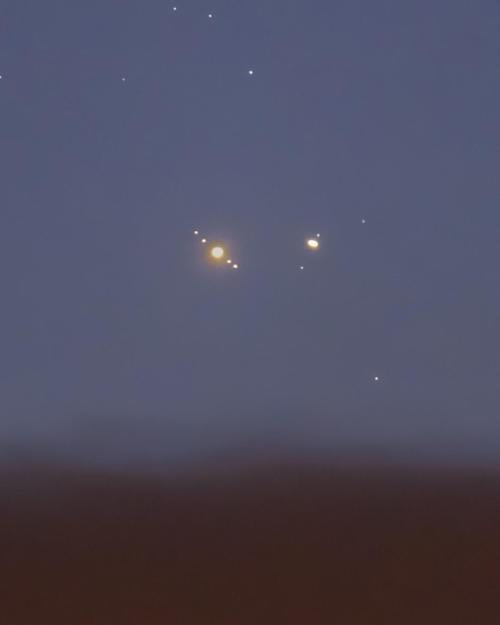RAF Light Strategic Bomber Ca. 1971 By Rasmus Poulsen


RAF Light Strategic Bomber Ca. 1971 by Rasmus Poulsen
More Posts from Epic-flight and Others

The Sun, as of December 2, 2016.

Conjunction: Jupiter and Saturn
Credit: Vladimir Mach

Winter - 220102
View these celestial beauties taken by the Hubble Space Telescope and released as a set of views in a modern day “Messier Catalog."
Spotting comets was all the rage in the middle of the 18th century, and at the forefront of the comet hunt was a young French astronomer named Charles Messier. In 1774, in an effort to help fellow comet seekers steer clear of astronomical objects that were not comets (something that frustrated his own search for these elusive entities), Messier published the first version of his “Catalog of Nebulae and Star Clusters,” a collection of celestial objects that weren’t comets and should be avoided during comet hunting. Today, rather than avoiding these objects, many amateur astronomers actively seek them out as interesting targets to observe with backyard telescopes, binoculars or sometimes even with the naked eye.
Hubble’s version of the Messier catalog includes eight newly processed images never before released by NASA. The images were extracted from more than 1.3 million observations that now reside in the Hubble data archive. Some of these images represent the first Hubble views of the objects, while others include newer, higher resolution images taken with Hubble’s latest cameras.
Learn more: https://www.nasa.gov/content/goddard/hubble-s-messier-catalog
Make sure to follow us on Tumblr for your regular dose of space: http://nasa.tumblr.com.

Mare Imbrium and Copernicus Crater l Manuel Huss

The Dark Seahorse in Cepheus : Light-years across, this suggestive shape known as the Seahorse Nebula appears in silhouette against a rich, luminous background of stars. Seen toward the royal northern constellation of Cepheus, the dusty, obscuring clouds are part of a Milky Way molecular cloud some 1,200 light-years distant. It is also listed as Barnard 150 (B150), one of 182 dark markings of the sky cataloged in the early 20th century by astronomer E. E. Barnard. Packs of low mass stars are forming within, but their collapsing cores are only visible at long infrared wavelengths. Still, the colorful stars of Cepheus add to this pretty, galactic skyscape. via NASA

Ghost Form.

The first step on the Moon, illustrated by Norman Rockwell for Look, 1967.

“First Men on The Moon” by Robert McCall, 1971.
-
 epic-flight reblogged this · 4 years ago
epic-flight reblogged this · 4 years ago -
 evolved-concepts liked this · 5 years ago
evolved-concepts liked this · 5 years ago -
 enchantingathleteoperaflowe-blog liked this · 5 years ago
enchantingathleteoperaflowe-blog liked this · 5 years ago -
 jpsxbox-blog liked this · 6 years ago
jpsxbox-blog liked this · 6 years ago -
 strongos liked this · 7 years ago
strongos liked this · 7 years ago -
 bummersorry-blog liked this · 7 years ago
bummersorry-blog liked this · 7 years ago -
 thephantomfrost liked this · 7 years ago
thephantomfrost liked this · 7 years ago -
 contact-second-floor liked this · 7 years ago
contact-second-floor liked this · 7 years ago -
 robostefan liked this · 7 years ago
robostefan liked this · 7 years ago -
 ronandoty liked this · 7 years ago
ronandoty liked this · 7 years ago -
 bachatanero liked this · 7 years ago
bachatanero liked this · 7 years ago -
 elpanchonacho reblogged this · 8 years ago
elpanchonacho reblogged this · 8 years ago -
 elpanchonacho liked this · 8 years ago
elpanchonacho liked this · 8 years ago -
 theimfamousblog reblogged this · 8 years ago
theimfamousblog reblogged this · 8 years ago -
 combdoc reblogged this · 8 years ago
combdoc reblogged this · 8 years ago -
 struggleboireg reblogged this · 8 years ago
struggleboireg reblogged this · 8 years ago -
 thereginator liked this · 8 years ago
thereginator liked this · 8 years ago -
 chatham68 liked this · 8 years ago
chatham68 liked this · 8 years ago -
 htinphone-blog liked this · 8 years ago
htinphone-blog liked this · 8 years ago -
 fireball1973 liked this · 8 years ago
fireball1973 liked this · 8 years ago -
 francebeaudry-blog reblogged this · 8 years ago
francebeaudry-blog reblogged this · 8 years ago -
 francebeaudry-blog liked this · 8 years ago
francebeaudry-blog liked this · 8 years ago -
 elw95-blog reblogged this · 8 years ago
elw95-blog reblogged this · 8 years ago -
 unleashedcode liked this · 8 years ago
unleashedcode liked this · 8 years ago -
 nightshade1989v2 liked this · 8 years ago
nightshade1989v2 liked this · 8 years ago -
 dark-web-lesbian-razgriz reblogged this · 8 years ago
dark-web-lesbian-razgriz reblogged this · 8 years ago -
 dark-web-lesbian-razgriz liked this · 8 years ago
dark-web-lesbian-razgriz liked this · 8 years ago -
 israelquinones9 liked this · 8 years ago
israelquinones9 liked this · 8 years ago -
 wenstenchoochill liked this · 8 years ago
wenstenchoochill liked this · 8 years ago -
 abigoldpileoftrash reblogged this · 8 years ago
abigoldpileoftrash reblogged this · 8 years ago -
 abigoldpileoftrash liked this · 8 years ago
abigoldpileoftrash liked this · 8 years ago -
 skullz-is1 liked this · 8 years ago
skullz-is1 liked this · 8 years ago -
 1ntsum liked this · 8 years ago
1ntsum liked this · 8 years ago -
 centurionking liked this · 8 years ago
centurionking liked this · 8 years ago -
 itstimewehavesomesoliddick liked this · 8 years ago
itstimewehavesomesoliddick liked this · 8 years ago

